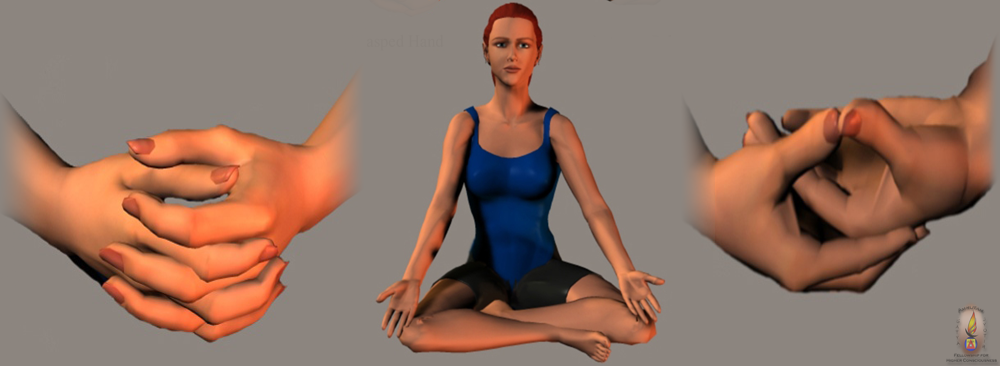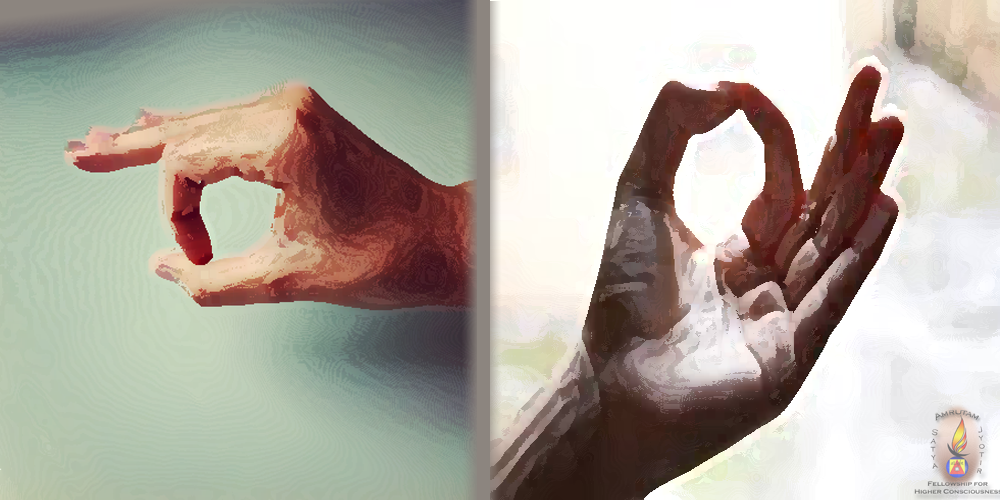By Rudra Shivananda
What are your hands doing when you are trying to meditate? When a seeker enters the stream and take a path of spiritual insight, he or she will pay a lot of attention to the sitting position and body posture. However, not much attention is paid initially to the position of the hands and this oversight can be detrimental to progress in meditation.
Traditionally, different hand positions have been established to have different effects on the energetic, emotional and mental processes. This is called the science of mudras and can be observed in statues and paintings of divinities and masters of yoga.
From a meditation perspective, the right combination of hand positions can either hinder or help depending on the type of meditation. There needs to be a matching – no single mudra is the best for all types of meditation techniques or situations.
For mindfulness or contemplative techniques which require sitting still for long periods, closed energy mudras may be best, so as to reduce the loss of energy. Simple mudras such as clasping the fingers of the hands together or with one hand resting on the other at the level of the naval are great energy savers. A third mudra for quiet meditation is the crossed arms or svastika mudra with the hands resting on the inside of the elbows.
For mantra meditation where a rosary or mala is used, you might want to have your left hand with the palms up at the naval level, while the right hand is holding the rosary at the heart level. The lower part of the rosary can be resting on the left palm.
In the case of energetic meditations where prana (life-force energy) or kundalini shakti (evolutionary energy) is being raised or expanded, additional help in controlling the mind is required. This is because a turbulent or distracted mind will affect the movement of the energy and cause unintended consequences. To prevent mental disturbances, both hands can be placed in chin mudra, where the tip of each index finger is touching the tip of the thumb to form a small circle. This brings about an energetic connection that helps to control the movements of the mind. A variation is to have one hand in chin mudra and the other in jnana mudra with the index finger touching the inside of the crease of the thumb below the tip. The jnana mudra helps to stimulate the wisdom potential of the mind.
A final note for those who are fortunate to have the opportunity to practice in the company of a master yogi – you should present an open hand posture to better receive the energy and blessings of the master. It is recommended to put your hands on the knees with the palms facing outwards or upwards.
Whatever practice or tradition a student is engaged in, proper attention should be applied to the placement of the hands for maximum benefit.


